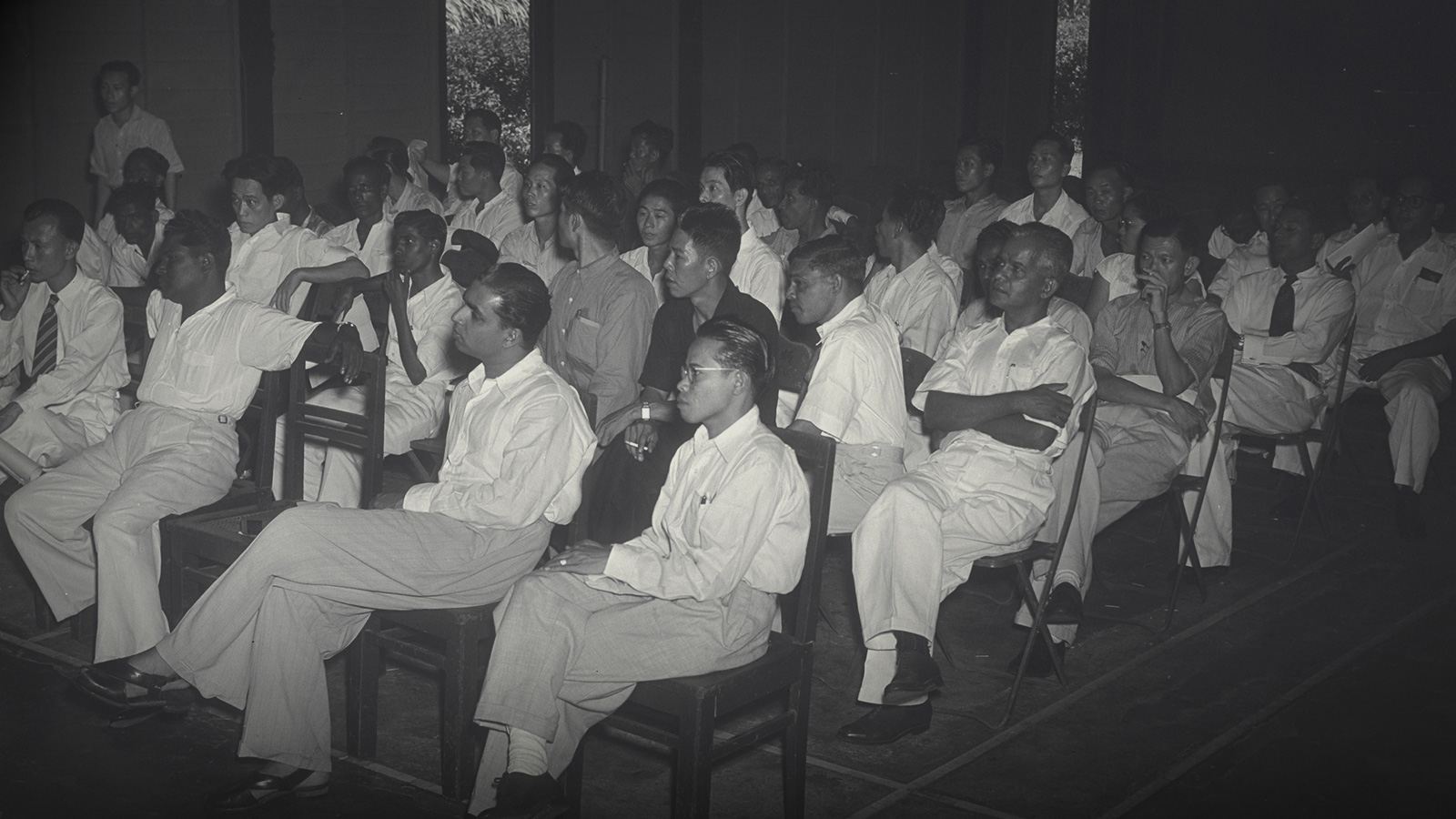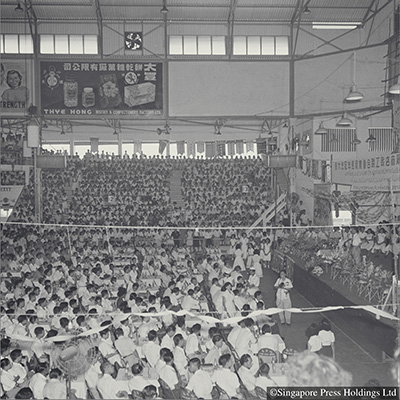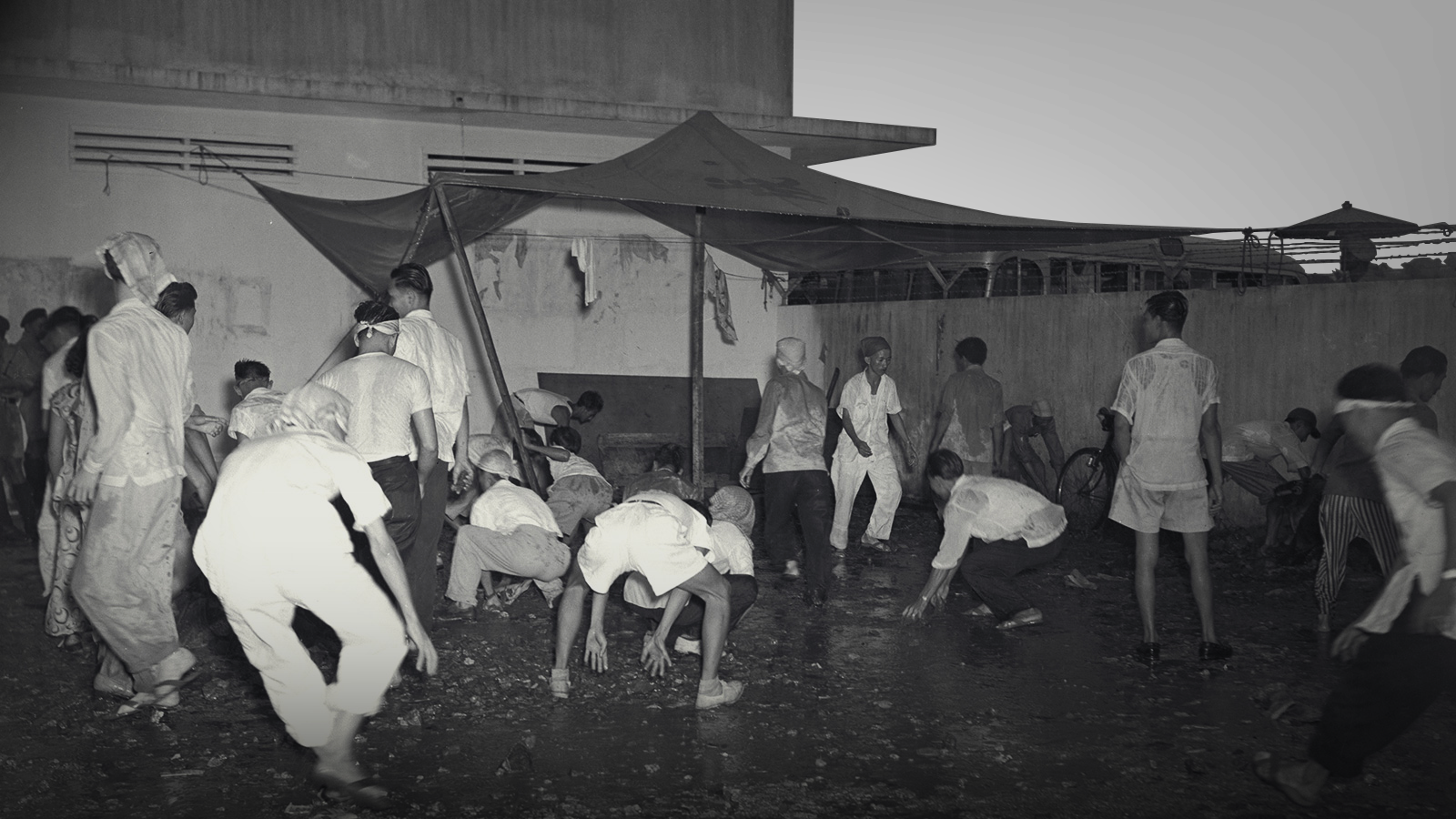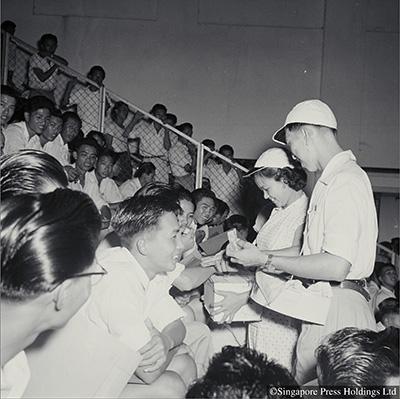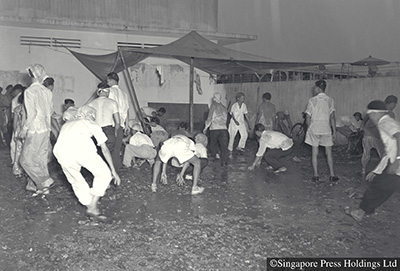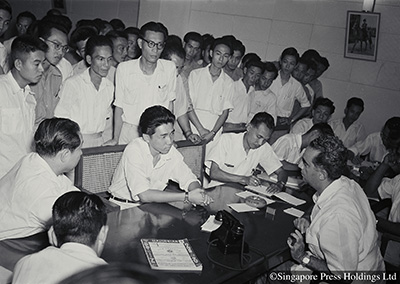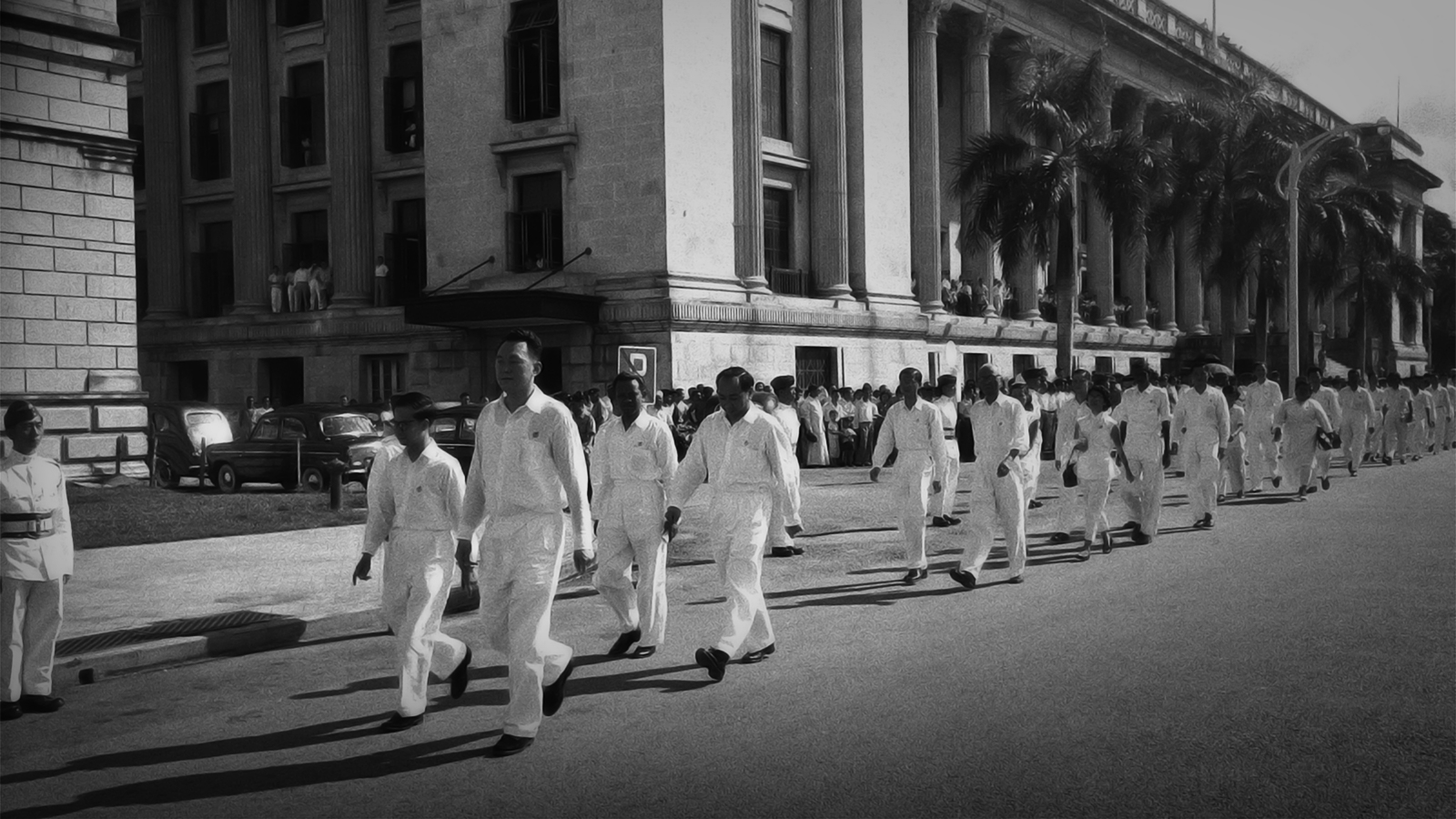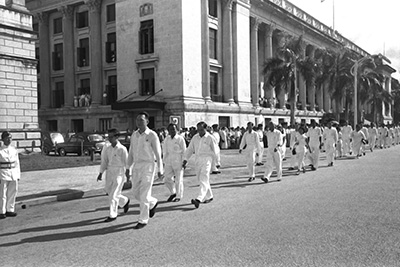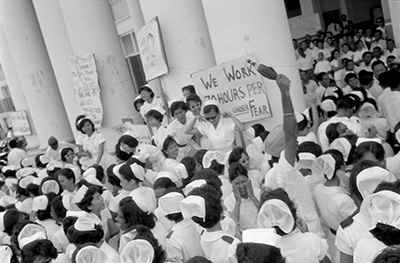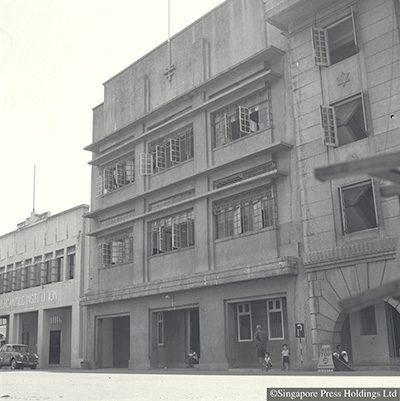Between 1949 and 1951, efforts were made to establish a federation of labour unions along the lines of the British Trade Union Congress. The most successful of these was the Singapore Trades Union Congress (STUC) which was formed in 1951.
Throughout 1949, there were several efforts to establish a new federation of labour unions along the lines of the British Trade Union Congress. By November 1949, there were three rival trade union congresses vying for control over Singapore's workers. First to emerge was Lim Yew Hock's Trade Unions Council, followed by the Singapore Workers' Trade Union Congress – which consisted of 27 English-speaking trade unions led by RK Samy – and then the Singapore Trades Union Congress under SS Manyam. At a meeting at the Victoria Memorial Hall on 8 January 1950, trade union leaders resolved to establish a united congress. After more than a year of set-backs, the STUC was established in May 1951 under the leadership of Lim Yew Hock. In December that year, it became an affiliate of the International Confederation of Free Trade Unions (ICFTU).
When the STUC gathered for its first annual congress on 30 September 1951, only 28 unions out of 167 in Singapore were represented. Only a sprinkling of those representing industrial labour were present.
This brought home the fact that Singapore's early labour movement was being spearheaded by English-educated or English-speaking trade unionists representing mainly white-collar workers, most of whom were from the public sector. Most of the Chinese-educated industrial workers, who were in the private sector and who had formed the SFTU's base were left out in the cold. These included bus drivers and conductors, rubber plantation workers, and general factory workers.
While the Emergency Regulations were designed to eradicate the Communist Party of Malaya's influence from the trade unions, they were not designed to outlaw legitimate trade union activity. Many of the industrial trade unions began amalgamating under umbrella union bodies such as the Singapore Bus Workers' Union (SBWU) and the Singapore Factory and Shop Workers' Union (SFSWU) which had been established in 1954 under the leadership of the pro-Communist unionist, Lim Chin Siong. The SFSWU started with a membership of only 200 workers but swelled to over 30,000 members within 10 months.
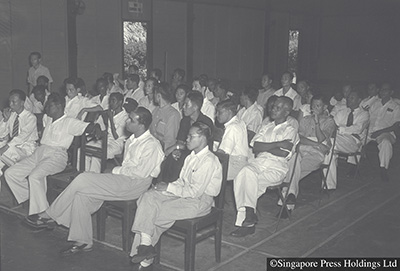
The Straits Times © Singapore Press Holdings Limited. Reprinted with permission
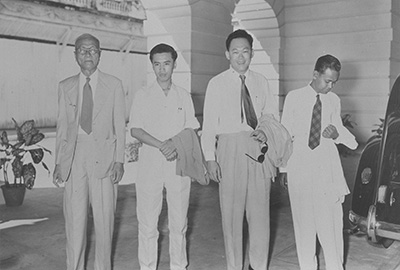
Ministry of Information and the Arts Collection, courtesy of National Archives of Singapore

